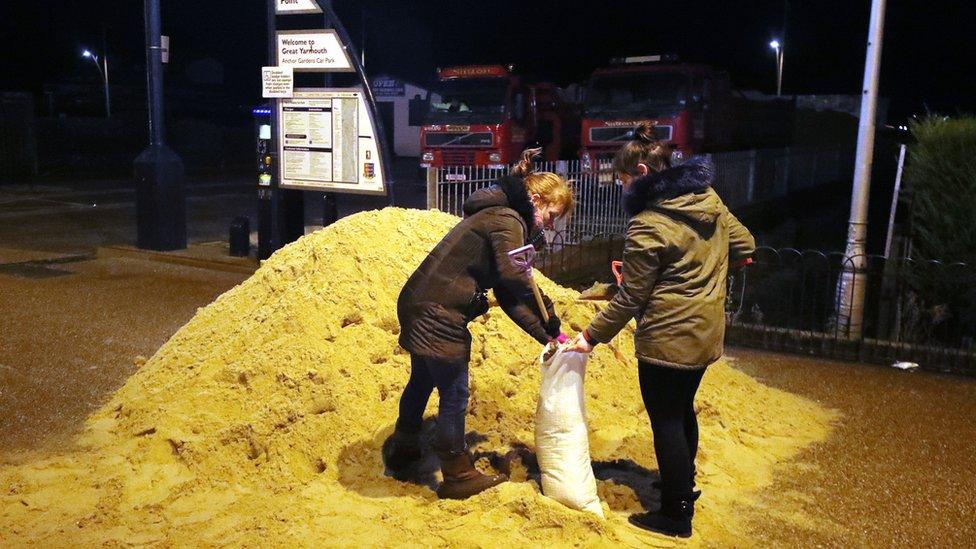Mersea Harbour: Plan to use 200,000 tonnes of sand to save harbour
- Published
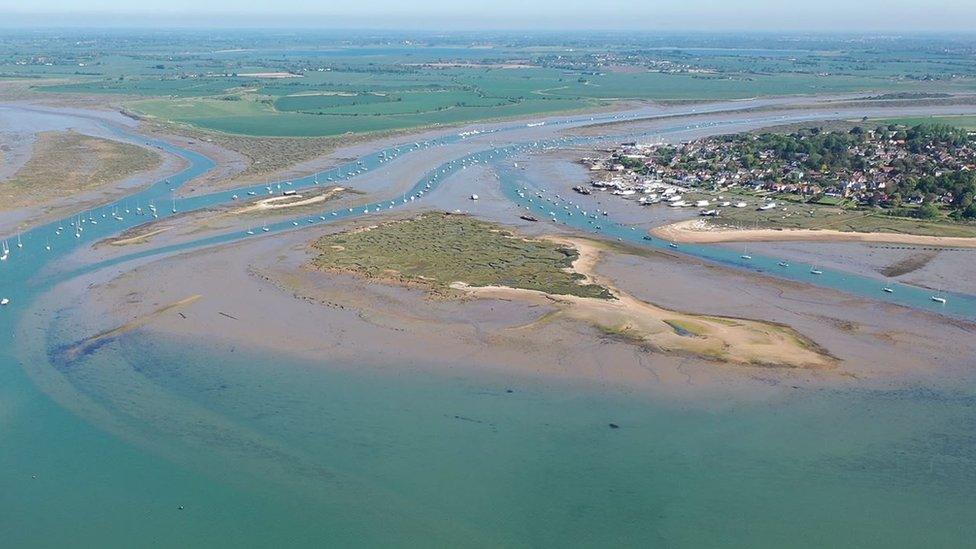
Cobmarsh Island (centre) and Packing Shed Island (centre left) face a "critical point" in terms of sea erosion, campaigners said
The transfer of 200,000 tonnes of gravel from two major ports is vital to protect a harbour and coastal island habitats for wildlife, say campaigners.
A group fighting to save Mersea Harbour, Essex, has raised £83,000 to use material being dredged up at nearby Harwich and Felixstowe ports.
Campaigners say the material can limit coastal erosion at Cobmarsh, Packing Marsh islands and Old Hall Point.
These islands, which have eroded, naturally help protect the harbour.
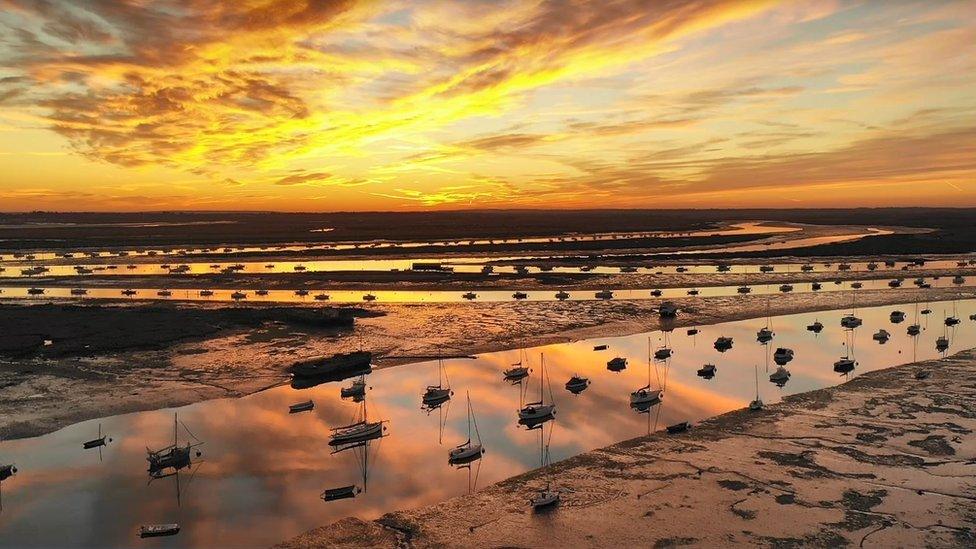
The harbour, which turns to mudflats at low tide, is home to wildlife, working boats and pleasure craft
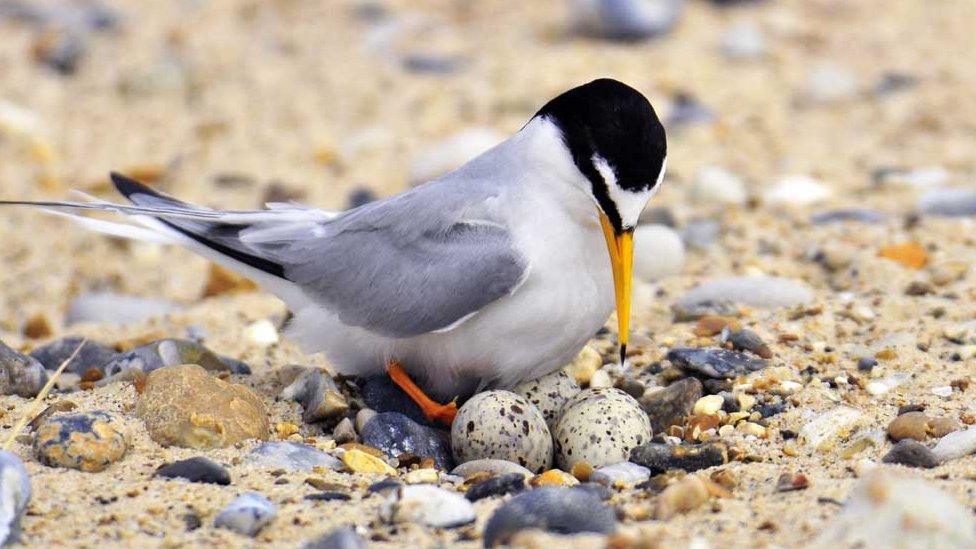
Little tern lay their eggs on stony beaches, which are under threat from erosion
The harbour is at West Mersea in the waterway which separates Mersea Island from the mainland.
Mark Dixon, of the Mersea Harbour Protection Trust (MHPT), said the scheme, as well as protecting the harbour, will also protect key marshland habitat for wildlife and birds such as little tern, oystercatchers and ringed plover.
Without the work these saltmarsh habitats could disappear within 20 years, and the harbour could be lost soon after, he said.
Mr Dixon said action was needed to protect the harbour because "erosion is accelerating. We have reached a critical point. There seem to be more frequent storms".
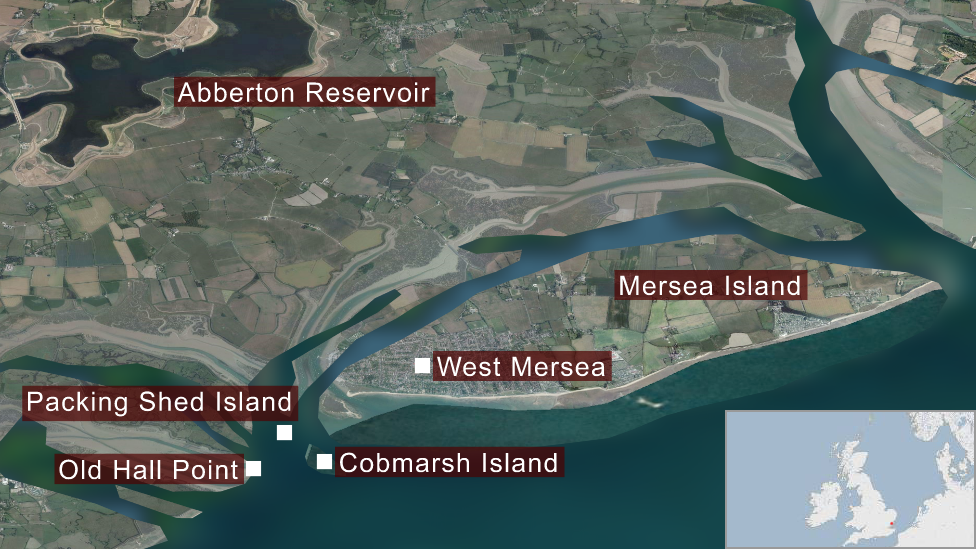
The Mersea Harbour Protection Trust says three islands in the harbour area need protecting with extra sand and gravel
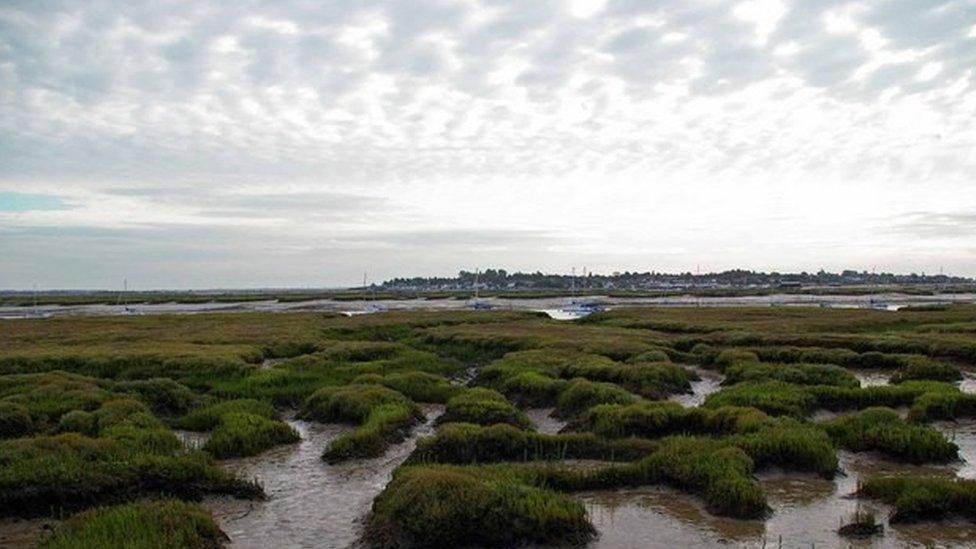
The saltmarsh habitats can get covered by the North Sea at high tide and provide rich pickings for wading birds at low tide
The two ports are creating deeper channels for larger ships by dredging up the sea bed.
Mr Dixon said the Trust had been in talks with the Harwich Haven Authority (HHA) - which runs Harwich and Felixstowe - about the work which could start in 2021.
"The MHPT has raised £83,000 to pay for all the surveys and employment of a specialist consultant," said Mr Dixon.
"We still have to raise £300,000 to pay HHA for the material to be delivered and £52,000 for the post-placement monitoring over a five-year period which is a consent condition from the Marine Management Organisation."

The Packing Shed was built around 1890 for cleaning and packing the Mersea native oysters
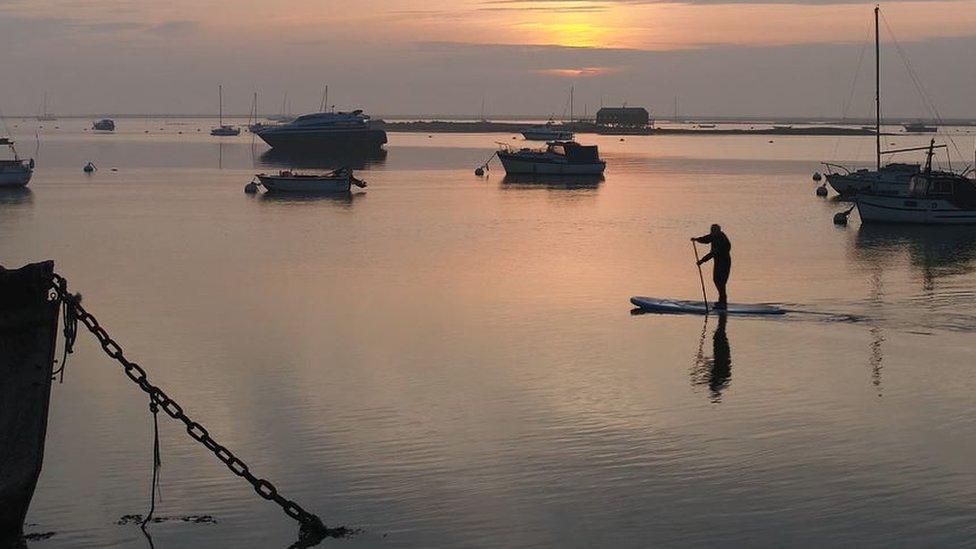
The Packing Shed had become derelict by the end of the 1980s, but was restored in the early 1990s
He said if the project gets approval from the council and various government agencies it could help secure the harbour's for an extra 70 years.
The Environment Agency said it has been generally supportive of the plans and was looking at the business case.
- Published14 January 2017
